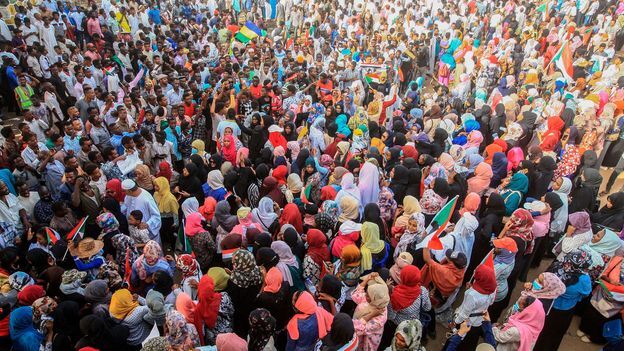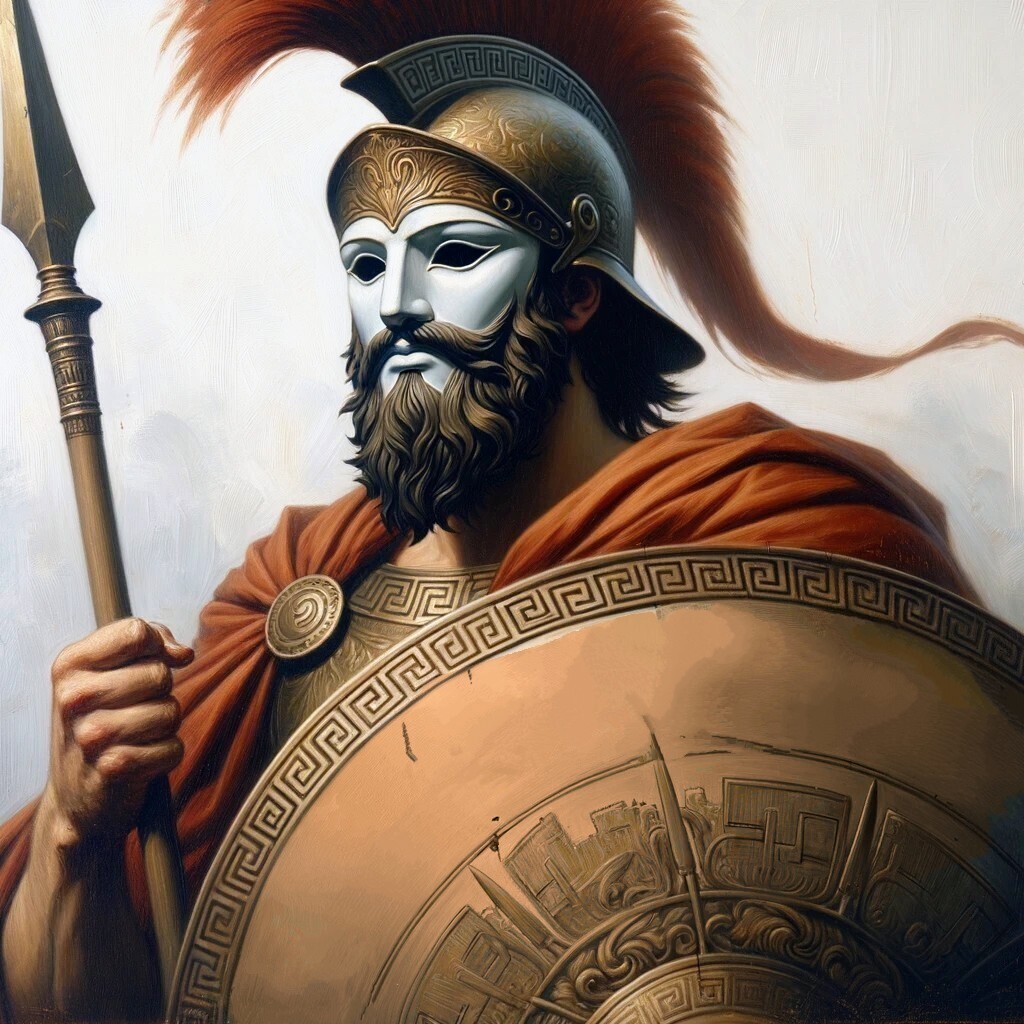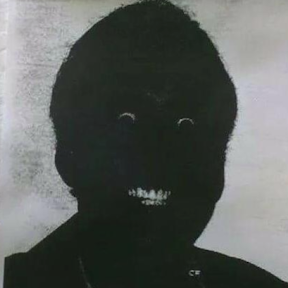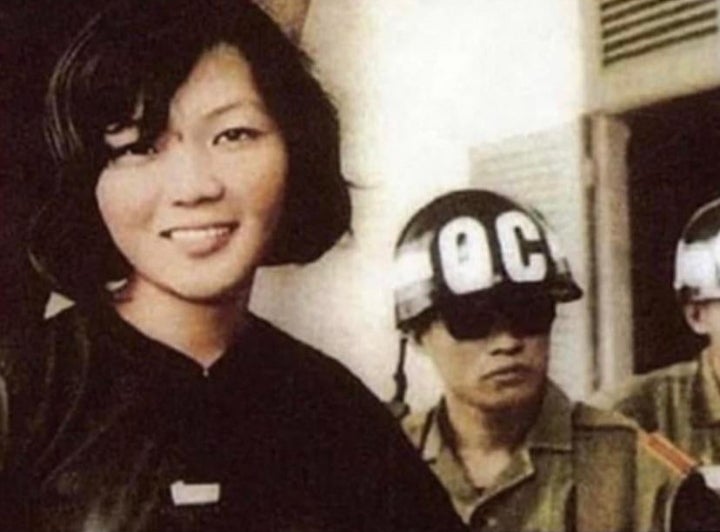Tell that to Hong Kong demonstrators on June 16, 2019, estimated by organizers at 2 million people marching. Hong Kong had a population of 7.5 million at the time.
Sure there was violence both before and after that protest, but mostly caused by violent crackdown by police.
But did it fail because there was violence or was violence a sign of stronger opposition? Causation vs correlation and all that.
Hong Kong wasn’t at or above 3.5% of Chinese population
I think we’re all aware. And Hong Kong isn’t (wasn’t) China in terms of governance(“one country, two systems”). China broke the deal it made with UK, which said Hong Kong would be autonomous until 2048, after which it would be incorporated into China.
But you’re right, not much to do when China claims authority and no one defends its right to free speech, democracy and autonomy.
Edit: added some need nuance on the “one country, two systems”.
China is as always a big Israel full of submissive but cunning cucks
Why Civil Resistance Works the book that 2x figure comes from has some major controversy about cherry picking data as well as playing with the definition of peaceful protest.
If peaceful protests worked (as good as this article suggestions) the BBC wouldn’t be writing about them.
Yeah, look at the Iraq war protests, they didn’t amount to anything because they were peaceful and easily ignored by the media.
This was going to be my counterexample too. Millions protested in the US, UK, Australia, and elsewhere before any troops were committed and it still didn’t help. I dont have solid numbers but I’d be shocked if less than 3.5% of people were involved. They were the biggest protests ever at the time.
I personally feel like a lot came out of it, though. The USA left Iraq for example.
The USA actually still had troops in Iraq, Syria, Jordan, etc. And the protests were to prevent an invasion from happening in the first place, not to go in, kill a million people and then 2 decades down the line throw up your hands and say ‘that was a mistake’ with no consequences for anyone that pushed for it.
In 2007 there were 170,000 troops in Iraq
In 2010 there were 88,000
In 2024 there were 2,500
And the number there should be is 0, I’m really not sure what point you’re trying to make here. People didn’t want a war in Iraq in 2003, there were mass peaceful protests, and yet it still happened.
The number absolutely should not be 0. It’s a nation which actively funds and mobilizes religious extremists who imprison or execute homosexuals and treat women as cattle.
EDIT: in this context Iraq/nation meant the local populace, not the government
Peaceful protest works great under two conditions:
-
Just a metric fuckton of participants
-
The implicit threat of violent protest (e.g. Malcom X behind MLK)
- Your opposition has empathy
-
Claims without any supporting evidence aren’t that interesting.
Edit: OP changed his post after I called him out for not referencing any sources
How to blow up a pipeline has a chapter on the topic.
You can also read the original book and check the examples.
P.C. this is article about the fourth mentioned protest in the article, and literally the second paragraph is about clashes. There are 11 casualties during this series of protests.
But you knew that with your high standards of verifying information right?
I’m not the one making claims. If you want to make a claim cite a source.
The article also made claims. Did you check them?
“There weren’t any campaigns that had failed after they had achieved 3.5% participation during a peak event,” says Chenoweth – a phenomenon she has called the “3.5% rule”.
Me scatching my head thinking,“10% of Hong Kong protested and still got stomped by China’s boot.” I suppose it could be argued that it’s not the same thing.
Based on the article “no non-violent movement that has involved more than 3.5% of a population has ever failed” has the caveat of “we only look at 3 of them, and those 3 worked”.
So their overall sample size is small, and the 3.5% sample size is just 3. Further, those 3 had no idea someone in the vague future would retroactively measure their participation to declare it a rock solid threshold.
I think the broader takeaway is that number of people seems to matter more than degree of violence, and violence seems to alienate people that might have otherwise participated.
All i know is what happened in Germany
Yeah. 3.5% would be about 2.8m people. This number has been exceeded easily last year when the AfD scandal happened. Absolutely fucking nothing happened.
This refers to Chenoweth’s research, and I’m somewhat familiar with their work. I think it’s good to clarify what non-violent means to them, as it’s non-obvious. For example, are economic boycotts violence? They harm businesses and keep food of the tables of workers. I don’t think that’s violence, but some people do, and what really matters here is what Chenoweth thinks violence is, and what they mean when they say “nonviolent tactics are more effective”.
At the end of “civil resistance: what everyone needs to know”, Chenoweth lists a number of campaigns which they’ve marked as violent/nonviolent and successful/unsuccessful. Let’s look at them and the tactics employed tonfigure out what exactly Chenoweth is advocating for. Please do not read this as a condemnation of their work, or of the protests that follow. This is just an investigation into what “nonviolence” means to Chenoweth.
Euromaidan: successful, nonviolent. In these protests, protestors threw molotov cocktails and bricks and at the police. I remember seeing a video of an apc getting absolutely melted by 10 or so molotovs cocktails.
The anti-Pinochet campaign: successful, nonviolent. This involved at least one attempt on Pinochet’s life.
Gwangju uprising in South Korea: unsuccessful, nonviolent. Car plowed into police officers, 4 dead.
Anti-Duvalier campaign in Haiti: successful, nonviolent. Destruction of government offices.
To summarize, here’s some means that are included in Chenoweth’s research:
- throwing bricks at the police
- throwing molotov cocktails at the police
- assassination attempts
- driving a car into police officers
- destroying government offices
The point here is not that these protests were wrong, they weren’t. The point is that they employed violent tactics in the face of state violence. Self-defense is not violence, and this article completely ignores this context, and heavily and knowingly implies that sitting in a circle and singing kumbaya is the way to beat oppression. It isn’t.
What about the arab spring?
They consider it non-violent.
I mean do they consider it a success?
Looks like it. So cherry picking from both ends on this one.
Non-violent protests still need to come with a credible threat of becoming violent if the protesters’ safety is being attacked or if their human rights are compromised.
Let me know what all the peaceful protests on climate change did leading up to and since the Paris Agreement.
Civil disobedience, including violent action, absolutely has a place in changing the policy of the state.
Sure, a poor uneducated place.
Lmao I love that people still reply to you when your name is trollception.
Well done.
Anyone who makes peaceful revolution impossible makes violent revolution inevitable.
List all the regimes that weren’t brought down by peaceful protests and singing kumbaya. No worries we will wait.
Czechoslovakia’s Velvet Revolution was one instance, assuming you squint and ignore all the NATO soft power involved.
The 2018 and 2024 Armenian Revolutions also technically qualify. Although, the fact that they had two in six years raises questions of their effectiveness.
American Revolution. French Revolution. Iranian Revolution.
Just a few very violent, and successful, revolutions.
I don’t really know if I’d consider the French revolution very succesful, considering the fact that the Bourbon dynasty was restored after only 16 years.
For how long? Irrelevant answer. The French Revolution was about shifting the ruling from nobility to bourgeoise and it’s exactly what happened. Valid to this very day.
There’s a book on the subject written by Srdja Popovic.
https://en.wikipedia.org/wiki/Blueprint_for_Revolution
Summary: protests that start (and try to remain) non-violent have a greater chance to succeed, because they can attract more people to their cause.
Critique: with some regimes, it’s not possible to non-violently protest. For non-violent protest to work, the environment must respect a minimum amount of human rights.
Case samples:
- US during the civil rights movement era: yes
- USSR under Gorbachev: yes
- Serbia under Milosevic: yes, with difficulty on every step (Popovic was there doing it)
- Israel under Netanyahu: probably yes
- China under Xi: practically no (not for long)
- USSR under Kruschev/Brezhnev/Andropov/Chernenko: not really
- Russia under Putin: no, don’t even hold a blank sheet of paper
- Iran under Khamenei: only if you’re doing a bread riot
- Saudi Arabia, USSR under Stalin, NK under the Kim dynasty: no, and execution would be a possible outcome
…etc. In some places, you can’t organize. Then your only option is to fight. As long as you can publicly organize, definitely do so - it’s vastly preferable. :)
Tankies are going to hate this comment.
Tankies are going to hate this comment.
They already are. :) I didn’t quite expect this effect, but I welcome it. :)
Crazy how triggered (and retarded) they are. Even got one who, rather than admitting he was wrong, doubled down arguing that the GDR was a USSR member state. For some reason that was important to his “argument”.
It’s crazy to talk about the US Civil Rights movement as peaceful, given the police / domestic terrorist bloodbath it resulted in.
How many civil rights leaders need to be shot to death before a movement isn’t peaceful anymore?
I understood US Civil Rights movement to be peaceful, as in the people in the movement did not instigate violence. Calling a protest violent because those in power struck back violently seems nonsensical to me.
I understood US Civil Rights movement to be peaceful, as in the people in the movement did not instigate violence.
I’m more responding to
then citing the US during the civil rights movement as a place where non-violent protest was possible.
Calling a protest violent because those in power struck back violently seems nonsensical to me.
When the police run into a crowd with attack dogs and billy clubs, while members of a white mob drag black demonstrators off to the nearest large tree to be lynched, I can’t imagine how you define that as “peaceful”.
The police running into the crowd are violent, certainly; as is the white mob. The response to a movement being violent doesn’t make the movement violent, any more than getting mugged makes the victim violent.
The response to a movement being violent doesn’t make the movement violent
It makes the event violent, which poisons the movement and discourages more civilians from participating.
The '60s Civil Rights Movement wasn’t the first such movement in the US. We’d had multiple protest waves and minority ethnic civil revolts going straight back to emancipation (and before it). They largely failed because they could not win enough support from the broader proletariat.
The '60s movement was only seen as a success because it won legislative and private sector concessions in a way prior movements failed to achieve. That happened first and foremost in cities and states where the police didn’t come in guns blazing and the political apparatus was ready to negotiate concessions quickly, to avoid further economic disruption. Those that did failed to enjoy the 60s/70s era of rapid economic growth and lost national influence as a result.
But to say the Civil Rights Movement succeeded where it began? In Selma, Alabama and Little Rock, Arkansas, and the Mississippi Delta? Absolutely not. State violence crushed it. The movement ended in violence in these early enclaves. It was not peaceful because it was not received peacefully.
Bcs it’s garbage
^^

You do realize that he wasn’t run over unlike the Palestinians who do get run over by Israeli tanks.
Not just Palestinians, Rachel Corrie got run over by an Israeli bulldozer and she was a peaceful protestor from the US.
https://www.npr.org/2024/03/30/1241231447/rachel-corrie-gaza-palestinians-aid-israel-hamas-war
https://archive.ph/2020.07.12-074312/https://imgur.com/a/AIIbbPs
The group of protesters remained steadfast, even in the face of annihilation. Shots rang out, innocents were struck, and people began to die. Nonetheless — there was power in numbers, and solidarity that allowed them to find courage — and thousands joined hands as bullets flew. “Students linked arms but were mown down,” wrote Donald. “APCs then ran over the bodies time and time again to make, quote ‘pie’ unquote, and remains collected by bulldozer.”
As if this wasn’t atrocious enough, the government’s criminal and brutal activity that day got even worse. With no regard for the families of these victims, not to mention their identities, what was left of them was disposed of — in an unspeakably callous manner.
“Remains incinerated and then hosed down drains,” Donald wrote.
Sounds like pure 100% propaganda. No surprise from angry loser account.
For hell’s sake have you ever seen the entire video from which the picture was extracted? The guy literally stopped the tanks, had a chat with them, and walked away unharmed.
And like clockwork, here they come crawling out of the woodworks …
“Oh no, the evil tankies are here to give facts against my CIA-manufactured sinophobic propaganda :(”
Please, answer: have you ever watched the entire thing?
Have you ever watched this, tankboy?
https://archive.ph/2020.07.12-074312/https://imgur.com/a/AIIbbPs
I especially liked the bit about using tanks to make human pie, and then flushing the pie down the drains.
Imagine this overt troll complaining about people crawling out of the woodwork.
Yet here you are 😘
For hell’s sake have you ever seen the entire video from which the picture was extracted?
Of course not. Nobody actually watches the video. They just see Lego memes of the picture and conclude “Communism Killed 100 Zillion People”
thanks CIA, your cringe BS is still cringe.
Guess that’s all you have, certainly not argumentsSo let me get this clear: your position is that I am CIA and that the Tiananmen square massacre did not happen?
Is that correct, or am I missing something? Feel free to use “arguments” to explain yourself.
you are missing a lot, brains mostly.
Also not interested in low level basic about the irrelevant tinyman square noise so bye.you are missing a lot, brains mostly.
Hey bloemkool, in the English language, people typically only have one brain. I’m not a zombie, so I have no need for multiple brains. So do you have anything else besides ad hominems?
Also not interested in low level basic about the irrelevant tinyman square noise so bye.
I just asked two simple yes/no questions. It is telling that you are refusing to answer.
Israel under Netanyahu: probably yes
When Palestinians protest peacefully they get shot at.
https://en.wikipedia.org/wiki/2018–2019_Gaza_border_protests
When foreigners peacefully protest in solidarity they get shot or run over.
https://www.npr.org/2024/03/30/1241231447/rachel-corrie-gaza-palestinians-aid-israel-hamas-war
Thanks for correcting. You’re right, I should have written something else than “probably yes” about Israel under Netanyahu. :(
US during the civil rights movement era: yes
I gotta ask, how the hell was the US in the 1960s a safe place to nonviolently protest? Police violence aimed at colored protesters during that era was notorious. Plus the church bombings, the lynchings, the assassinations…
LOL complete BS
US during the civil rights movement era: yes
USSR under Gorbachev: yes
Serbia under Milosevic: yes, with difficulty on every step (Popovic was there doing it)
Imaginary history.
Israel under Netanyahu: probably yes
They murdered hundreds of palestinians during peaceful protests. GTFO with this BS.
USSR under Kruschev/Brezhnev/Andropov/Chernenko: not really
Russia under Putin: no, don’t even hold a blank sheet of paper
Iran under Khamenei: only if you’re doing a bread riot
Saudi Arabia, USSR under Stalin, NK under the Kim dynasty: no, and execution would be a possible outcome
How many times can you list russia/ussr? Give me a break with this lib imperialism.
How many times can you list russia/ussr? Give me a break with this lib imperialism.
I may list it as many times as I need. I was born there and grew up there, and have a whole lot of information about how life was.
Srdja Popovic
LOL
https://inthesetimes.com/article/wikileaks-docs-expose-famed-serbian-activists-ties-to-shadow-ciaTelling you have the name perestroika, by the hated traitor Gorbachev putting them in misery while corrupt oligarchs from the west leeched on Russia.
Not sure you should include Gorbachev since he illegally dissolved the USSR against the will of the people.
dissolved the USSR against the will of the
peopleRussians- https://en.wikipedia.org/wiki/1991_Armenian_independence_referendum
- https://en.wikipedia.org/wiki/1991_Azerbaijani_independence_referendum
- https://en.wikipedia.org/wiki/1991_Estonian_independence_referendum
- https://en.wikipedia.org/wiki/1991_Georgian_independence_referendum
- https://en.wikipedia.org/wiki/1991_Latvian_independence_and_democracy_referendum
- https://en.wikipedia.org/wiki/1991_Lithuanian_independence_referendum
- https://en.wikipedia.org/wiki/1991_Turkmen_independence_referendum
- https://en.wikipedia.org/wiki/1991_Ukrainian_independence_referendum
- https://en.wikipedia.org/wiki/Declaration_of_State_Sovereignty_of_the_Byelorussian_Soviet_Socialist_Republic
Seems to be just about everybody wanted to leave the USSR.
Yes, the USSR, famous for respecting the will of the people …
The end of East Germany was crazy precisely because it was so peaceful. A number of popular outcries in the late 80s instigated civil reforms. And then one of the defense ministers was asked on national TV in '89 “hey, does this mean we don’t need the Berlin Wall anymore”. He shrugged and confessed it was no longer needed. And the military took that as a signal to step aside and let the wall get torn down.
In less than six months, the country was holding free elections. And by the following year, they’d reunified.
No shots fired. A purely popular and peaceful revolution that happened practically overnight, by historical standards.
Excuse me, I have a question. Who was the leader of the USSR when this happened?
Gorbachev.
However, its the GDR Communist Chairman Erich Honecker that ultimately changed policy that resulted in reunification.
Gorbachev
Ah Schrödinger’s Gorbachev, both a great respector of the will of the people, as well a traitor who went against the will of the people.
However, its the GDR Communist Chairman Erich Honecker that ultimately changed policy that resulted in reunification.
Then why did you comment on a post that was about the USSR?
Ah Schrödinger’s Gorbachev, both a great respector of the will of the people, as well a traitor who went against the will of the people.
What? Do you believe everyone in a country has identical political views?
That’s a very naive understanding of popular politics.
Then why did you comment on a post that was about the USSR?
The GDR was a member of the USSR.
Keep Goodhart’s law in mind:
“When a measure becomes a target, it ceases to be a good measure”
General strikes accomplish a fuck of a lot more in a shorter amount of time. When the owners of the administration can’t get their poptarts to the stores to be sold, the bank calls their loans and shit gets real.
Right after Covid ended, the nurses in the NYC hospitals decided that after being so heroic for over a year, they deserved raises, and some other benefits. The hospitals flat-out refused anything.
The nurses went on strike. Within 72 hours, every single one of their demands was met, including a fat raise.
Unions and strikes work.
Yeah, too many people keep acting like “hold up a sign” and “start shooting” are the only two political actions possible. There is a vast array of disruptions and threats to the status quo that do not require violence.
deleted by creator
This is actually rewriting history.
The Philippines had multiple militant movements but notably the Reform the Armed Forces which had orchestrated and abandoned a coup that had popular support kicking off the protest movement.
Sudan was a military coup that overthrew bashir and then massacred protestors and was actually backed by American OSI NGOs.
Algiers street protests were illegal and they combined general strikes with police clashes and riots even though they were subjected to mass arrests.
For Ghandi MLK jr and others mentioned there were armed militant groups adding pressure. My take away is you need both approaches.
Without demonstrating the ability to defend your nonviolent protest with devastating results it just gets crushed. If you are militant with no populist public movement backing your ideals you get labeled as terrorists and assinated by the feds.
This is a really common misunderstanding of how nonviolent movements actually work, and frankly gets the causality backwards.
You’re right that successful movements often have both violent and nonviolent wings - but the nonviolent components don’t succeed because of the violent ones. They succeed despite them. The research is pretty clear on this: nonviolent campaigns are actually more likely to achieve their goals than violent ones, and they’re more likely to lead to stable democratic outcomes.
Nonviolent movements get labeled as extremist precisely when they’re associated with violence, not when they’re separate from it. The Civil Rights Movement’s greatest victories came when they maintained strict nonviolent discipline - Birmingham, Selma, the March on Washington. Every time violence entered the picture, it gave opponents ammunition to dismiss the entire movement.
The “good cop/bad cop” theory sounds intuitive but doesn’t hold up to scrutiny. What actually makes nonviolent resistance effective is mass participation, strategic planning, and moral leverage - not the threat of violence lurking in the background.
The research is pretty clear on this:
Lol. What was the methodology on this “research”?
The Nonviolent and Violent Campaigns and Outcomes (NAVCO) Data Project is the world’s leading dataset on the characteristics and outcomes of nonviolent and violent resistance campaigns. The latest version covers 627 mass mobilizations in every country in the world from 1900-2021. The coverage is global but excludes maximalist campaigns (i.e. those seeking to overthrow an incumbent government, expel foreign military occupation, or secede).
Chenoweth and co-author Maria J. Stephan published their first analysis of the comparative outcomes of nonviolent and violent resistance campaigns in the 2011 book Why Civil Resistance Works: The Strategic Logic of Nonviolent Conflict. In this book, the authors aggregated data from 1900–2006 and concluded that, overall, nonviolent civil resistance was more successful in achieving target outcomes than campaigns that use violence. The more recent dataset featured in the interactive tool confirms this trend and extends it into the past decade.
That didn’t remotely answer my question.
It did give the info needed to find this.
Violent campaigns on the other hand were defined as follows: “Violent resistance […] involves the use of force to physically harm or threaten to harm the opponent.” (Chenoweth/Shay 2020: 5). Violent campaign data was primarily collected from different databases including: The UCDP Armed Conflict Database, the Correlates of War database on intra-state wars (COW), Clodfelter’s encyclopedia of armed conflict (2002), and Kalev Sepp’s list of major counterinsurgency operations (2005) (Chenoweth/Shay 2020: 5). To note is that should a campaign at some point during its lifespan shift from a non-violent campaign to a violent one or vice versa, that this campaign is then coded as two separate campaigns (Chenoweth/Shay 2020: 7).
This led me to believe they are analysing in a vacuum but that would only really be true for the Philippines example.
This review is a fantastic in depth analysis of the data and outcomes when violent flanks (apparently the research term describing the parallel movements that are not nonviolent) are included.
https://www.annualreviews.org/content/journals/10.1146/annurev-polisci-051421-124128#f1
Two tables analyse the purported and contradictory outcomes of the flanks in different research projects and papers. The authors conclusions are interesting to me in that he or she believes them to reduce long term success and increase short and mid terms, and also poiints out other factors in table 3 that affect the outcomes. One thing eluded to is that the societies perception of the movements being majority violent or non violent is actually the determining factor in the outcome and that I agree with in societies that presuppose nonviolence as a determining factor for success. I imagine nonviolence is a lit less important when you see yourself as occupied by an external force.
Thanks! That’s very comprehensive.
I directly answered you and provided sources and background.
Maybe try reading on your own without a mentor for granting you reading comprehension
I think what they’re looking for in terms of methodology is what objective criteria they use to determine if a protest is violent or nonviolent, as well as what constitutes success or failure. These are not trivial questions, and there’s lots of debate surrounding virtually any given movement, so to make objective determinations about a large number of such movements raises the question of how they’re resolving all these questions and debates. Some might argue that such questions are inherently political and up to interpretation.
As another user in this thread pointed out, it may be a case of confusing correlation with causation: if a movement is popular, it may be more likely to succeed and more likely to be considered nonviolent, as compared to a less popular movement employing the exact same tactics.
You talk about research, so I’m curious: has any nonviolent campaign succeeded without an accompanying violent campaign?
Yes, but it’s complicated. I’ll use Iran’s long tradition of nonviolence as a case study.
In the late 1800’s when the shah tried to sell out tobacco farmers to foreign exploitation, and virtually everyone in the country opposed it, resulting in a tobacco boycott. Virtually everyone in the country participated it, including members of the shah’s own harem, and religious leaders issued a fatwa condemning anyone who violated it. The shah was forced to cave to pressure and reversed the decision.
This boycott movement helped for organization that would set the stage for later (largely peaceful) protests that led to the shah signing a constitution and establishing a democratic parliament. Unfortunately, he died shortly afterwards, and his son was much less cooperative, and called on foreign assistance to shell parliament, and successfully restored himself to power.
During WWI, Iran was invaded by the Ottoman, British, and Russian Empires, and the country suffered greatly from disease, famine, and the Armenian genocide, leading to over 2 million civilian deaths during the period. The Qajar dynasty collapsed, as did the Ottoman and Russian Empires, allowing Britain to dominate the power vacuum. They supported the new Pahlavi dynasty into power, there was a parliament, but the shah generally appointed whoever the British told him to as prime minister.
At this point, oil had been discovered in Iran, and the Iranians were stuck with an awful, exploitative deal that the previous dynasty had signed, as part of their general policy of selling out every part of the country to foreign colonizers so the shah could have a bigger harem. This deal was substantially worse than the general deal the US offered (which was generally 50/50 between the country that owned the oil and the country that built the infrastructure to extract it). But the terms didn’t actually matter because the British violated them all the time, vastly underreporting how much oil they were extracting so that they paid virtually nothing, and the Iranians had zero oversight of their records. Britain relied on this oil to be one of the richest and most powerful nations on the planet, while the Iranians remained some of the poorest people in the world.
For the next several decades, the Iranian people repeatedly asked Britain very nicely if they would possibly consider not stealing all their oil. And for those decades, the British completely stonewalled them, refused to consider any sorts of concessions whatsoever. Even with their own, hand-picked prime ministers, they still stonewalled them.
Finally, in the 1950’s, and a peaceful democratic movement successfully pressured the shah to appoint a popular leader, Mohammad Mosaddegh, as prime minister - the shah finally became more afraid of popular discontent than he was of the British. Mosaddegh, after making attempts to negotiate, made a decision with overwhelming popular support, to nationalize the oil industry. This, however, led the British to impose a blockade, crippling the country’s economy.
Mosaddegh was an idealist, and he believed the Americans would see his cause as just, connect it to their own revolution, and back him up against the British. At this point, most Iranians had neutral or positive views of the US, seeing them as well intentioned, if naive, not understanding how long the Iranians had been struggling against British colonialism. All of these perceptions were proven completely wrong, because, rather than backing them up, Eisenhower agreed to use the CIA to overthrow Mossadegh to protect BP’s profits and to ensure British cooperation with NATO and the Korean War. This was the first of the CIA’s coups of democratic governments.
A stark example of this betrayal is that, the day before the coup, a US ambassador called Mossadegh and fed him a false story about how his supporters had been calling the embassy with death threats, and he was afraid he’d have to shut it down. Mossadegh - who had refused to crack down on (CIA funded) protests, or censor the (CIA controlled) press, or seek aid from the Soviets, or otherwise do anything to disrupt the infiltration out of concern for principles and respecting dissent -then issued as public statement calling for his supporters to cool it and stay off the streets. When his residence was attacked, no one was on the streets to come to his aid. He lived out the rest of his life under house arrest, while the shah used his absolute power to hunt down and exterminated the Iranian left - until he finally crossed the US and was himself overthrown by the current government.
When the stakes were low (from a geopolitical perspective), like, some poor tobacco farmers trying to maintain their (still quite poor) lifestyle, nonviolence worked. When the stakes were higher, like, changing the whole structure of the government, nonviolence worked better than one might expect, but generally encountered violent resistance and counter-revolution and fell apart. When the stakes were very high, like, trying to get a world-spanning empire to stop stealing the resource it needed to dominate the world, nonviolence was not very effective at all.
Being in Iran’s position, it really wouldn’t matter what they did to try to appease Westerners, so long as they assert control over their natural resources - so they don’t really bother. The goal of nonviolence is to be “in the right” but Iran’s history proves that you can be 100% “in the right” and still lose because foreigners don’t know/care about what’s being done to you, or are propagandized to side with the oppressor.
This doesn’t necessarily apply to protests in the US, but it can. If you’re a nonthreatening old white lady and your goals are not too disruptive to the empire, then sure, do nonviolence. But if you’re someone who the news could villainize, who people will assume the worst of just because of your race or religion, then they’re probably going to characterize you as violent whether you are or not. And if your goals are something that would disrupt the ruling class’s hold on power, then understand that the only reason they aren’t gunning you down is that they aren’t afraid of you - the real dangerous part about nonviolence is that it can be effective, and if power is threatened it will respond with force.
Who wrote this article? Fairy tale bullshit??
look at this fed (and my answer): https://lemmy.world/post/31384291/17679569
Could it be they are scared of actual change and started a social media campaign? Coincidentally also the same message from Bernie the sheepdog. https://x.com/BernieSanders/status/1932148252800905415



















